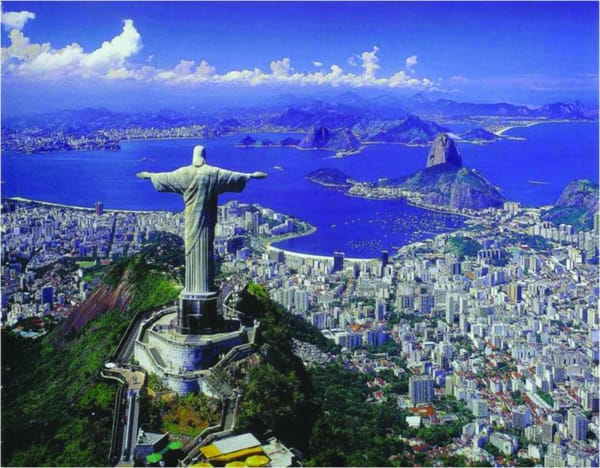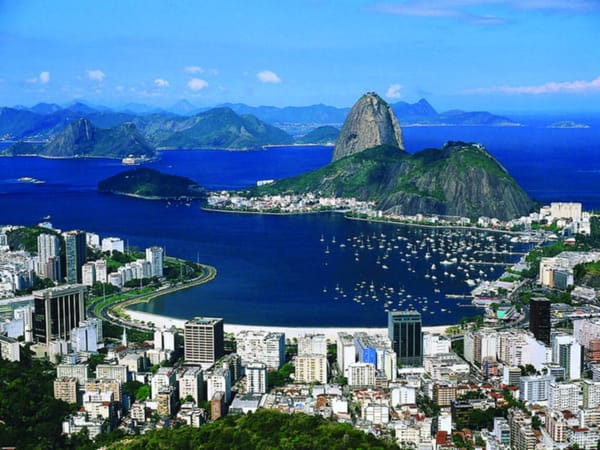Ambling Argentinean escapades
The latest antics from Priya Garg, who tosses away her inhibitions and embraces the manic culture of Argentina’s booming capital

Surviving a semi-camo twenty four hour bus journey, we arrived at the slightly grubby omnibus terminal in the iconic metropolis of Buenos Aires. Throwing ourselves onto the Subte (Argentina’s answer to the tube) we were presented with an antique wooden carriage complete with grey leather sashes hanging from the ceiling and extravagant glass wall lights.
The London Underground it was not. Winding through the quaint streets of San Telmo to our hostel, we found it amidst broken paving stones, crumbling colonial buildings, pillared walls, beautiful balconies and intricately carved gates. This was the hippie art district of Buenos Aires, a small residential area boasting artists, musicians and designers, housed within a bustling city full of light and life.
That night we attempted to cross the Avenue 9 de Julio, one of the widest roads in the world, each flank comprising of more than seven lanes in each direction, with careering Argentinean taxis speeding wildly round each corner spilling profanities. Bemusedly, the centre-piece of this magnificently broad avenue was formed by a soaring phallus-like obelisk which rose up to touch the sky, translating little of Buenos Aire´s Argentinean charm.
As we walked toward the centre of the city, we quickly discovered again the disappointing taint of globalisation, from American-influenced street names to fast-food restaurants, and the unfortunately termed ´Palermo Hollywood´ district that boasts showy nightclubs and pizza restaurants. Several blocks down, the Avenue de Florida was alive with tango dancers and merchants flogging the deprecatingly termed ‘gringo gear’ – everything from leggings, teapots and glowing snow-globes to maracas, friendship bracelets and postcards.
Beyond this hectic gathering lay the grandiose Casa Rosada, a huge pink palace, home of the executive seats of the ruling government of Argentina and offices of the President. Gilt, gold, fountains, finery and ostentatious guards now cover this historic monument. Perhaps the most infamous President, Juan Domingo Peron, husband of the much glorified ´Evita´ Eva Peron still imposes his presence upon both the building and the rest of the city.
Peronism remains a contentious issue in Buenos Aires, with ´Up Evita´ scrawled across walls next to our hotel and bygone Peronist politics under constant hushed discussion. If you wander around the non-government funded ´Evita Museum´ you will find an encapsulated shrine to the actress-come-women´s rights activist, telling of her social reforms and charitable welfare policies but little to enlighten you as to why her body was desecrated before it came to lie in the Recoleta cemetery, only adding to the mystery over Argentina’s chequered and complex political history. Asking locals to unravel our confusion, we were often told “we don’t want to speak about it”.
Several streets down, next to the Institute of Tango, we visited the oldest cafe in Argentina, the Tortoni. A popular building where elderly waiters in striped trousers, bowties and carrying white cloths over one arm, click through mahogany walled surroundings and stained glass ceilings, memorising orders and bringing you fried sweet ‘churros’ pastries or sticky ‘dulce de leche’ caramel covered biscuits. As if static from the 1920s, it gives an otherworldly air to the painted, modern surrounding streets.
Finding much more live music here than in our search for samba in Rio de Janeiro, we were delighted to see guitar bands and drummers on every corner. Disappointed by some of the passionless glum tango couples flicking heels for tourist pesos, we were mesmerised by one Spanish guitarist, whose fingers ran down his fret board strumming and plucking, until two street children ran up and smacked his guitar mid-performance, jerking him out of his daydream.
Later in our stay we went to a gig in the Ciudad Cultural Konex to experience the fervent drumming of ‘La Bomba de Tiempo’, a popular percussion group in the Abasto area of Buenos Aires. Girls with nose rings and boys with mohicans swayed and jumped to loud Argentinean beats, recorders and saxophonists. The club was aswirl with cigarette smoke, sweat, Brahma beer underfoot and the passion of a pounding band behind.
Walking out of the heat of the venue couples dotted the streets, wrapped in public displays of affection, on benches, in parks and against walls. Our English reserve and respect for personal proximity seemed almost prudent as we, arms extended, shook hands with our Argentinean neighbours, very ´proper´ and ´how do you do´, while any local would grasp us by the arm and kiss on the cheek in a first introduction. Our national stereotypes were magnified in their dichotomy in manner.
On our penultimate evening, we were treated to a typical national meal with two locals, who were kind enough to take us to a hearty restaurant, buzzing at one o’clock in the morning, full of people slicing grilled meats and savouring deep-flavoured red wine. If you go out in Buenos Aires, the party only really gets started in the early hours of the morning: clubs stay open until 7am, then after-clubs and even more after-clubs.
Even within our own hostel, the South Americans were the ones who were still awake at 8am for breakfast from the night before. Our early nights became something of a joke. According to the Argentineans, English people are very ´controlled’, in reference to our early-night behaviour, finances and emotions. We were out-partied by fifty year olds, tangoing the night away in lively local dance halls.
Our final day was spent gazing at the popular, emblematic multi-coloured houses of La Boca next to the harbour, attempting to drink the acquired taste of bitter alcoholic ´furnet de coco´ (a both surprising and unusual mixture of a bitter menthol liquor paired with the fizzy sweetness of Coca-Cola) and preparing ourselves for the mountainous, cold scenic beauty of the Argentinean lake district in Bariloche.
As we bid goodbye to Buenos Aires – a vibrant city packed with vitality, music, and all-night entertainment – we reflected on what we had learnt from our visit: to throw away our reticence, moderate our English reserve, and simply let ourselves go.
Read about the rest of Priya's travels:









